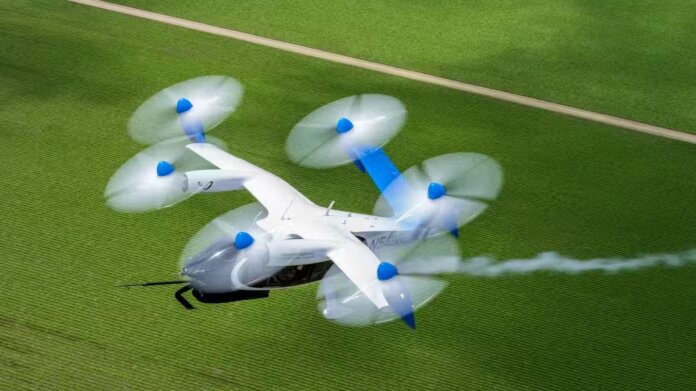A new generation of “flying cars” promises to revolutionize urban mobility, but limited battery power holds them back from plying longer routes. A new hydrogen-powered variant from Joby Aviation could soon change that.
Rapid advances in battery technology and electric motors have opened the door to a new class of aircraft known as eVTOLs, which stands for electric vertical takeoff and landing. The companies making the aircraft tout them as a quieter, greener alternative to helicopters.
However, current battery technology means they’re limited to ranges of approximately 150 miles. That’s why they have primarily been envisaged as a new form of urban mobility, allowing quick hops across cities congested with traffic.
Joby is already developing a battery-powered eVTOL that it expects to start commercial operations next year. But this week, the company announced it has created a hydrogen-powered version of the aircraft, which recently completed a 523-mile test flight. The company says this could allow eVTOLs to break into regional travel as well.
“With our battery-electric air taxi set to fundamentally change the way we move around cities, we’re excited to now be building a technology stack that could redefine regional travel using hydrogen-electric aircraft,” JoeBen Bevirt, founder and CEO of Joby, said in a press release.
“Imagine being able to fly from San Francisco to San Diego, Boston to Baltimore, or Nashville to New Orleans without the need to go to an airport and with no emissions except water.”
Joby’s demonstrator is a converted battery-electric aircraft that had already completed 25,000 miles of test flights. It features the same airframe with six electric-motor-powered tilting propellers that allow it to take off vertically like a helicopter but cruise like a light aircraft. Joby says this should significantly speed up the certification process if the company decides to commercialize the technology.
What’s new is the addition of a hydrogen fuel cell system designed by H2FLY, a German startup Joby acquired in 2021, and a liquid hydrogen fuel tank that can store about 40 kilograms of fuel. The fuel cell combines the liquid hydrogen with oxygen from the air to generate the electricity that powers the aircraft’s motors. The H2FLY team used the same underlying technology in a series of demonstration flights with a more conventional aircraft design last year.
The new Joby aircraft will still carry some batteries to provide additional power during takeoff and landing. But hydrogen has a much higher energy density—or specific energy—than batteries, which makes it possible to power the aircraft for significantly longer.
“Hydrogen has one hundred times the specific energy of today’s batteries and three times that of jet fuel,” Bevirt wrote in a blog post. “The result is an electric aircraft that can travel much farther—and carry a greater payload—than is possible not only with any battery cells currently under development, but even with the same mass of jet fuel.”
However, switching to hydrogen fuel poses some challenges. For a start, hydrogen requires complicated cooling equipment, which means airports or other landing facilities would need to invest significant amounts in new fueling infrastructure.
“The industry is already scratching its head figuring out how to support battery electric aircraft with charging infrastructure at airports,” Cyrus Sigari, co-founder and managing partner of VC Up.Partners, told TechCrunch. “Adding hydrogen filling stations into that equation will present even more challenges.”
Hydrogen’s green credentials are also somewhat weaker than those of batteries. While it’s possible to generate hydrogen from water using only renewable electricity, at present the vast majority is produced from fossil fuels.
However, efforts are underway to increase the supply of green hydrogen, and the Bipartisan Infrastructure Law passed in 2021 set aside $9.5 billion to help boost these efforts. And if hydrogen-powered flight can piggyback on innovations in eVTOL technology, it could prove a powerful way to curb emissions in one of the world’s most polluting sectors.
Image Credit: Joby



